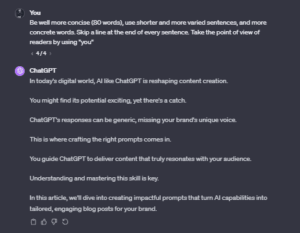You think that marketing a tech product is hard? Think again! Tech companies can rely on a weapon of massive seduction: their origin story.
From Thomas Edison to Steve Jobs, we remember the history of technological progress through its leading innovators.
So, when you sell an innovative product, it’s only fair to tell the story of its innovators. But how do you choose the right words?
Here’s a guide to getting started in technological storytelling.
Why is the origin story of your tech brand important?
A tech product is often the result of thousands of hours of research, design, and experiments from passionate visionary inventors.
This story of brain and sweat deserves to be told by tech companies. It can bring tremendous opportunities to connect both your customers and your employees to your brand. The origin story can help you to :
- Create emotional attachment in the minds of your prospects.
- Improve brand awareness and product understanding (stories are more than 6 times more likely to be remembered).
- Unite your employees, stakeholders, and customers around the same vision.
- Differentiate yourself from your competitors (what is also called thought leadership).
Are you ready to unleash the fascinating story of innovation? Let’s go!
Telling a compelling tech story: 4 key components
A story hooks the readers’ minds by putting them through various emotional moments, from hope and hardship to reconciliation and accomplishments. That’s also the case with tech stories. They include 4 crucial components:
#1 Focusing on the innovator heroes
We can’t help it, in every tech story we remember, there’s one innovator that comes to our mind. Our mind craves the admired and hopeful figure of the innovator. But that story shouldn’t sound like an overused and cliché fundraising pitch. Readers have had enough of overblown promises from tech entrepreneurs. They want the concrete stuff.
So how to introduce the founding fathers of your company? By telling bluntly how they have come to the first idea of their innovation. And as often the reality is more authentic than often portrayed in news magazines.
You might want to elaborate on how the founders met, the distinctive personality traits that made them a perfect match, and how their first collaboration started. You also might give us a glimpse into how they came up with their technology (the core analogy or mental picture), the moment and the place, and what made them so drawn to this vision.
These details will make your story more believable, and simply more human.
For example, in my content career, I’ve often written for robotics companies. I’ve especially highlighted how these tech enthusiasts came to fulfill their ultimate dream -which is designing their own robot model.
Some started with their engineering classmates, others with coworkers at the plant. Their ideas came while experimenting in the lab, or thanks to happy coincidences when talking to industrial manufacturers. They often wanted to change the way industrial robots were built (they designed small-scale ones or added more arms and reach). That unique perspective first put them as anomalies in the industry, then became their key differentiation.
Nothing is more relatable to a tech insider than another -obsessively nerdy- tech insider!
#2 Highlighting the company’s purpose
A brilliant innovator isn’t enough, you also need to give him a life-changing vision and drive. He/she needs to have a burning desire to solve a tangible problem. The one of your audience.
That’s where your customers should identify. They are struggling every day with an enduring problem that is wasting their time at work, making them lose key business opportunities, or preventing them from reaching their true business potential. And your founding innovators vowed to wholeheartedly help them. That’s the story you want to tell.
You might tell your readers how your founders have themselves felt the pain of the problem, the place and the moment where they decided to make a difference, and what was their ideal solution. You might tell them the promise they made and what are the goals and values that will help them fulfill this promise.
Over the years, I’ve helped a fair share of entrepreneurs to sell their SaaS B2B tech products. Each of them has gotten their hands dirty, and each of them has been frustrated with very complex work processes.
For example, they realized how hard it is to create subtitles, edit a video or gather customer data. One day, they wondered why they had to lose so much time on these tedious tasks, and why they couldn’t just make it easier for everyone. So they started to build a product prototype with other teammates that relieved people a little of this problem.
And that’s where they found their core mission: helping frustrated customers like them.
#3 Detailing the struggle to design and market
When you’ve set the stage for your heroes, now is the time to add some drama and suspense. Nobody likes a flat, uneventful, and all-happy story.
Your tech readers want to be surprised by unexpected twists, wondering how your founders even got out of these desperate situations. Moreover, they want to see the most genuine and human part of a story, where people are struggling and thinking hard to solve a problem.
So you might not cover up the failures and setbacks that have happened in the first years of the company. On the contrary, you might describe the initial setbacks, the days and nights spent researching and experimenting with the product, the first bad customer feedback, and the failed market launches. You might also share the various prototypes and ideas you tested along the way to finding the perfect product.
This won’t discredit your brand, instead, it will make it more relatable and authentic for your readers.
For my part, I’ve often told the deficiencies and weaknesses of the startup I’ve been working with. I confess to the readers that, yes sure, our product is not perfect, but that’s because we’re improving it every day. We’re putting all our efforts into finding and designing features that will address their needs. And that’s why we can be trusted because we’re facing a hard problem, and we’re doing our best to solve it.
Telling your hardships is a way to make your readers appreciate how hard you’ve been working and how glad they can be that you’ve eventually made it.
#4 Making your customer’s success your happy ending
Throughout all these necessary struggles, your founders have now set their own path and found a way out. After so many trials and errors, they have found the perfect formula that solves the problem of their customers. So who should come out as the winner?
Not only your founders but more deeply, also your own customers. They should naturally feel like they are part of the solution. They get to live the same self-discovery journey every day, and benefit from the same game-changing solution. So you have to lead them to a climax where they can envision their own success.
You can show how they can now finally save and enjoy what is truly meaningful for them: their time, their people, and their success. You can provide real customer success stories – how, when, and why your solution made a difference in their daily job. Not only that, but you can also explain how your solution has made the world at large a better place: how you helped people, society, or even the planet.
The positive social or ecological impact of your company should be the culmination of the story you want to tell. And it should lead all your stakeholders to the same conclusion: a happy and hopeful ending.
What is the best format for telling your tech story?
You can tell a compelling story in any format. It all depends on the storytelling vision you want to carry and what your tech audience is used to consuming. You can turn your story into :
- A dedicated about page.
- An e-book or a book.
- A short video series.
- A short film.
- An interview, a podcast, or an audio show.
It’s all up to you to find the best way to stage your storytelling!
Examples of engaging tech brand narratives
The art of storytelling is not new, but examples of truly remarkable stories are rare. Yet, some tech companies have managed to generate tremendous value by telling exceptional stories. These include :
Universal Robot
Universal Robot is a leading collaborative robot manufacturer. In 2022, they launched their UR20 robot model, the latest model of their UR series. To promote their new product, they created a storytelling campaign around its origin story called Reautomated. In a 5-episode video format, they interviewed key players behind the projects (engineers, designers, marketers, partners).
Each of them detailed how they came up with the product idea, the challenges they faced, and how they leveraged the UR ecosystem. This is an excellent example of industrial storytelling. What makes it compelling is that they’re getting through the same designing, manufacturing, and marketing process as their manufacturer’s audience. They are bringing to the table a story that they are living every day.
HP
To make businesses aware of cybersecurity risks, HP launched a breathtaking storytelling campaign called “The Wolf”. It leverages all the dramatic elements of thriller movies to tell a warning message. It features the actor of the famous TV show Mr.Robot the antihero hacking a company’s IT system with a seemingly harmless weapon: a printer. Customers can clearly identify with the victim characters, as they are struggling against a well-thought-out cyberattack.
Cisco
Cisco marketing campaigns are relying on one simple and powerful message: to bridge the gap between people. While addressing a tech-savvy audience, they always make sure to show the tangible benefits of communication technology advancements. For example, they have made a documentary celebrating the achievements of the telecom industry. It highlights the history, some key actors that have helped grow the industry, and their impact on anyone. The newest Cisco clip takes an even deeper plunge, by showing how interactivity is fueling our collective intelligence.
Your turn to get your tech audience hooked with a well-crafted story!





